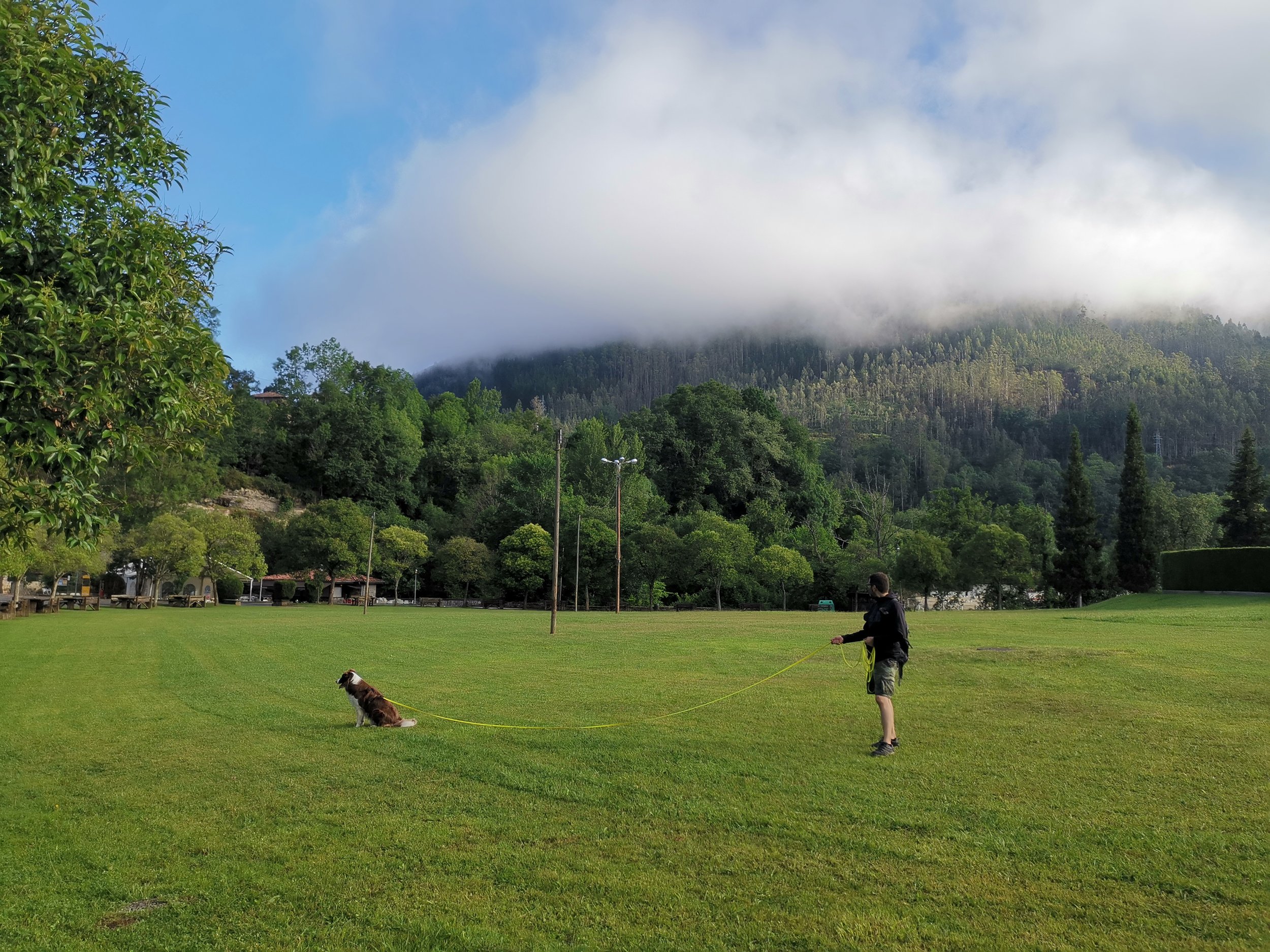Observing is Learning
When we stop for a moment and take notice of things happening around us, we make sense of the environment, of the people and the cars, of everything that makes noise and things that move at different speeds in our presence, and the smells, and other animals, and… The World. But we notice those things when we are in the state of mind that allows our brain to see and hear and smell... and process all the information.
Ecko and Alex observing
Dog are activated by vision. This is the first sense that will usually get triggered. Some dogs, like Ecko in the photos, have a lot of difficulty handling situations where there is movement. It doesn’t even have to be fast movement or a lot of movement, some dogs only need a little action to react. When we understand that the sense of vision comes first, we can start to see why this is happening.
But we must also consider that some of these dogs that react to movement are subjected, every day, to a lot of it. It is a simple equation: if a dog is triggered every day by an event - this is true for many events, not only movement - the dog is going through a lot of stress and that will invariably have an effect on behaviour. The more something happens, the stronger and quicker the reaction becomes.
If you want to know the things that you can do to help your dog recover after a stressful event, you can read about them here:
Recovering from and stressful event
To be afraid is normal, it is a survival mechanism, necessary so we can protect ourselves from dangerous things. Animals would not survive in the wild without fear. This form of stress is natural. The problem arises when it happens too often and for too long, and the stress becomes chronic.
Learning to observe can be a great tool for us and our dogs. Observing things that scare them and giving time to our dogs to process them is very important, but the key to success is distance. Observing must always be done from within the dogs’ limits. If the dog is worried or reacting, we have already surpassed that limit and the brain will not be in learning mode.
A great way of achieving the right state for observing is practicing calm session during our daily walks. This way dogs learn how to observe peacefully. Read more about them here:
Puppies and young dogs will see many new things every day. They are curious and want to find out about all these new things. Curiosity is food for the brain and even if they feel a bit nervous this curiosity will often take over and the dog will learn to cope. We must be very aware of how much is enough for them. After all, puppies have only been in this world for a few months and cannot be expected to behave as adults do or face the same situations in the same way. As they grow older, they will need further challenges and more learning about new things, but we must ensure we do it in small portions, so they get a change to cope and learn. They need time to make decisions:
Dogs need time to make decisions
When observing:
We do not talk to the dog. We are allowing their full concentration on what is happening.
We do not pull on the leash as this would only introduce tension and worry the dog. Again, full concentration on the task at hand.
No treats. Do we want the dog’s attention on the thing she is observing or the food? Of course, we want her focused on observing. Food is connected to survival and very difficult for a dog to ignore or refuse. When we want dogs to learn by observing we will do better to avoid it.
Let’s give our dogs the chance to analyse, this is how they learn.

